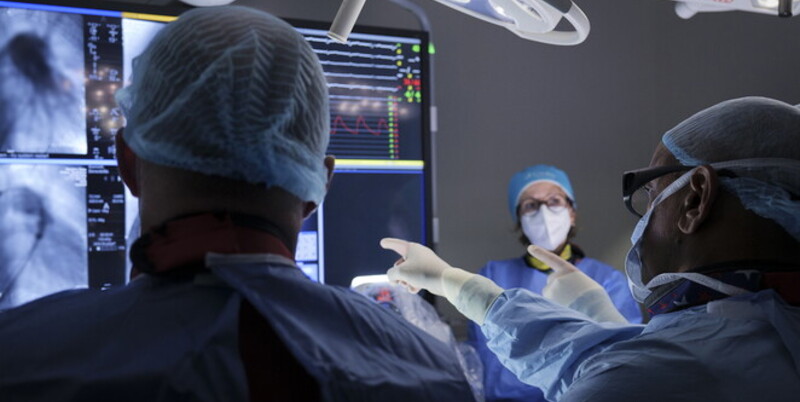Life-saving surgery at the Bambino Gesù Children’s Hospital on a young 21-year-old patient suffering from severe pulmonary stenosis, a serious malfunction of the pulmonary valve that regulates the exchange of blood and oxygen between the heart and lungs.
The condition of the girl, unable to sustain open heart surgery, made it necessary to resort to an innovative trans-catheter device, used for the first time in Italy but not yet authorized in Europe, which facilitates positioning for endoscopic approach of pulmonary valve prostheses in patients with severe congenital heart disease.
The surgery was successfully performed by the Bambino Gesù Interventional Cardiology Unit, directed by Dr. Gianfranco Butera. The patient is doing well and was discharged just 2 days after the procedure was performed.
The Defective Valve
In a healthy heart, the pulmonary valve – located between the right ventricle and the pulmonary artery – opens to allow blood to proceed to the lungs for oxygenation and then closes, to prevent it from flowing back along the right outflow channel.
In patients with certain congenital heart defects (most cases of pulmonic stenosis or tetralogy of Fallot) this hinge function is impaired. Thus a phenomenon of pulmonary regurgitation occurs, a partial reflux of blood which can normally be resolved with the positioning of pulmonary valve prostheses through open heart surgery or, when possible, endoscopically. In this way the correct functionality of the heart is re-established.
Endoscopic implantation – preferable due to the lesser physical and psychological stress caused to the patient – can be hindered or prevented by the irregular morphology of the right outflow, which can present excessive dilatation due to previous surgical interventions or other factors. This is the case of the 21-year-old patient who was followed up at Bambino Gesù from an early age for severe pulmonary stenosis: neither open-heart surgery nor that of traditional trans-catheter valves were feasible for her.
An “Hourglass” for The Heart
The specialists of the Interventional Cardiology Unit therefore evaluated the implantation of a new latest generation trans-catheter device, already in use for some years in the United States but not yet authorized in Europe, for which the green light was required from part of the Ministry of Health for compassionate use.
It is a system (Alterra Adaptive Prestent) made up of two components. The first is a self-expanding metal stent, which acts as a reducer of the diameter of the dilated right outflow. A sort of hourglass-shaped conduit that provides the support base for the second component, a standard pulmonary valve. Thanks to this system it is possible to intervene endoscopically even in the case of dilatation of the right outflow up to 42-44 millimeters, against the maximum 29 millimeters that can be managed with traditional trans-catheter devices.
Moreover, since the pulmonary valve prostheses are made of biological material, they undergo a partial deterioration over time which requires their replacement. Due to its metallic nature, the “hourglass” does not undergo the same process and allows a new valve to be inserted by hemodynamics when necessary.
Less Patients for The Scalpel
The full use of this new trans-catheter device, when possible, will therefore make it possible to treat a wider range of patients with congenital heart disease who are now destined for the scalpel due to extensive dilatation of the right outflow.
“The possibility – says dr. Gianfranco Butera – of a procedure after which you can go home in 2-3 days, is an important result in terms of the patient’s experience who is subjected to less physical and psychological stress than open heart surgery. And it also represents an advantage for the National Health Service due to the lower commitment of resources. Interventional cardiology is based on continuous technological evolution. Only at Bambino Gesù we will be able to go from a number of 25-30 patients a year to at least 45-50. Today, thanks to the authorization of the Ministry of Health, we are happy to have been able to respond to the need for treatment of one of our patients for whom waiting would have represented too high a risk“.








